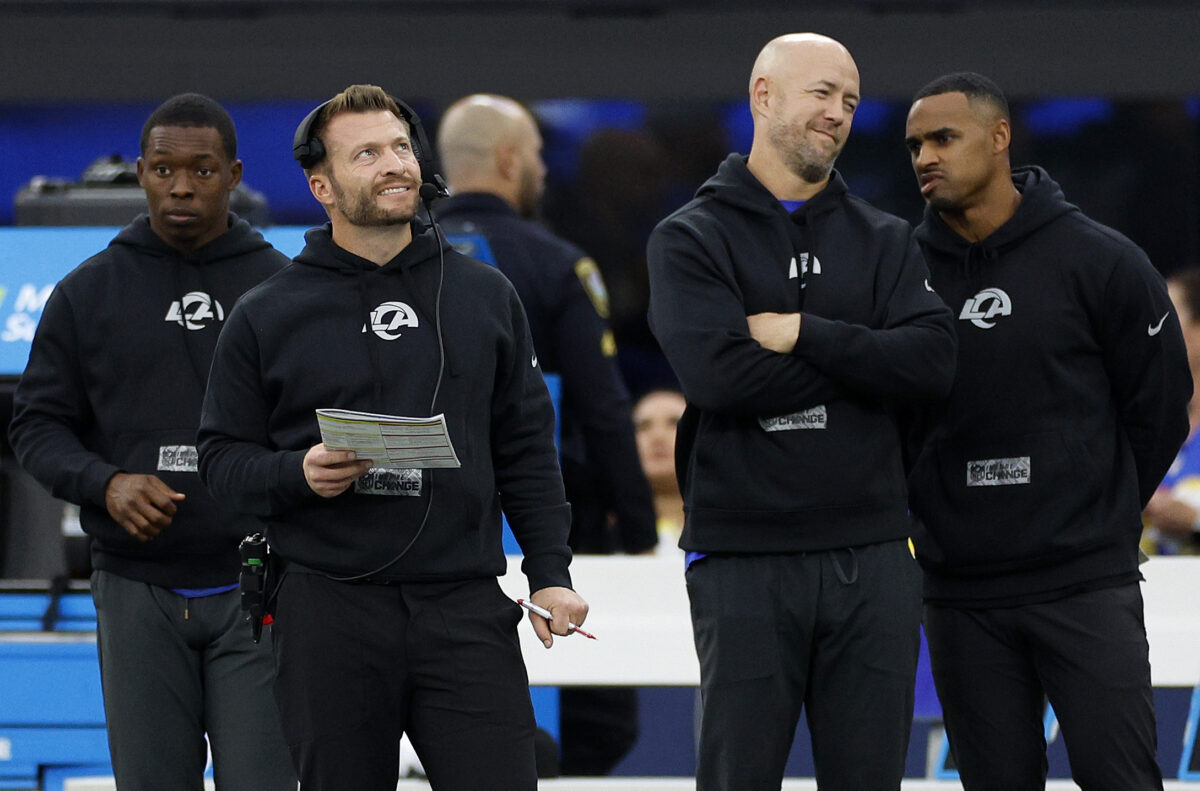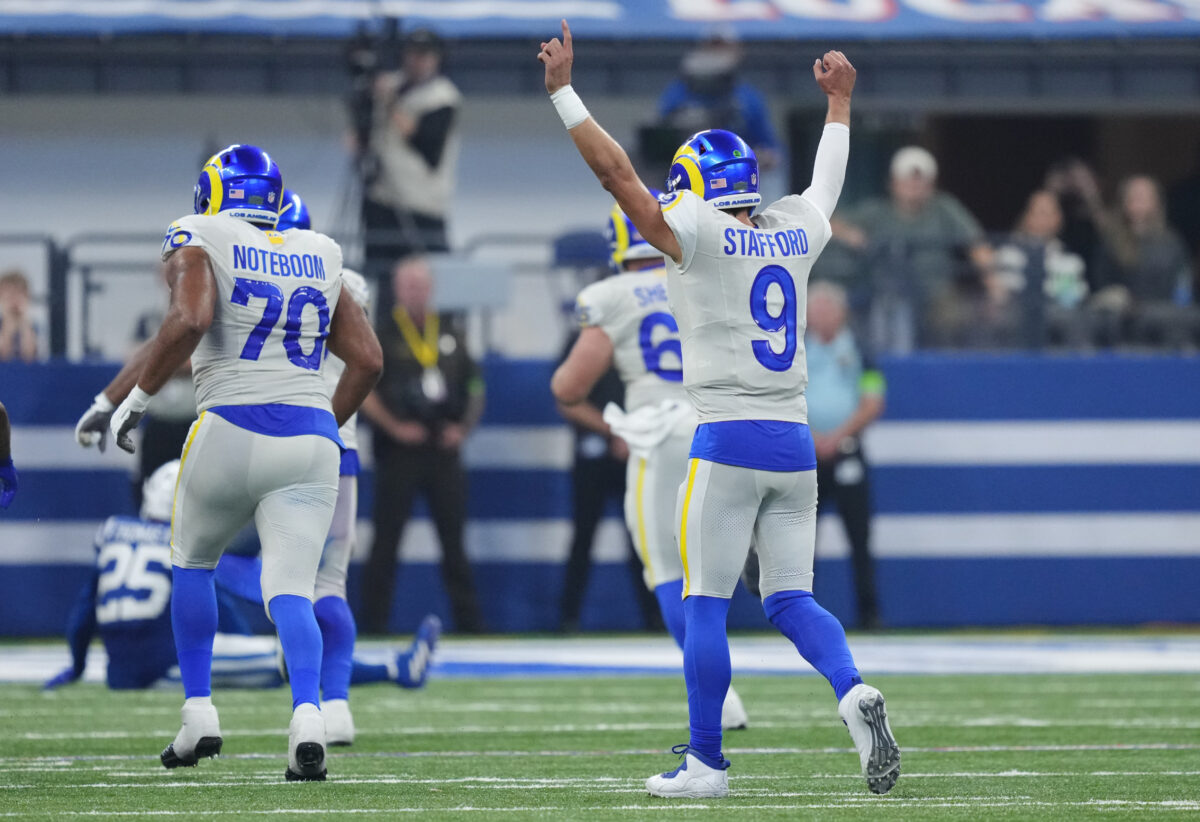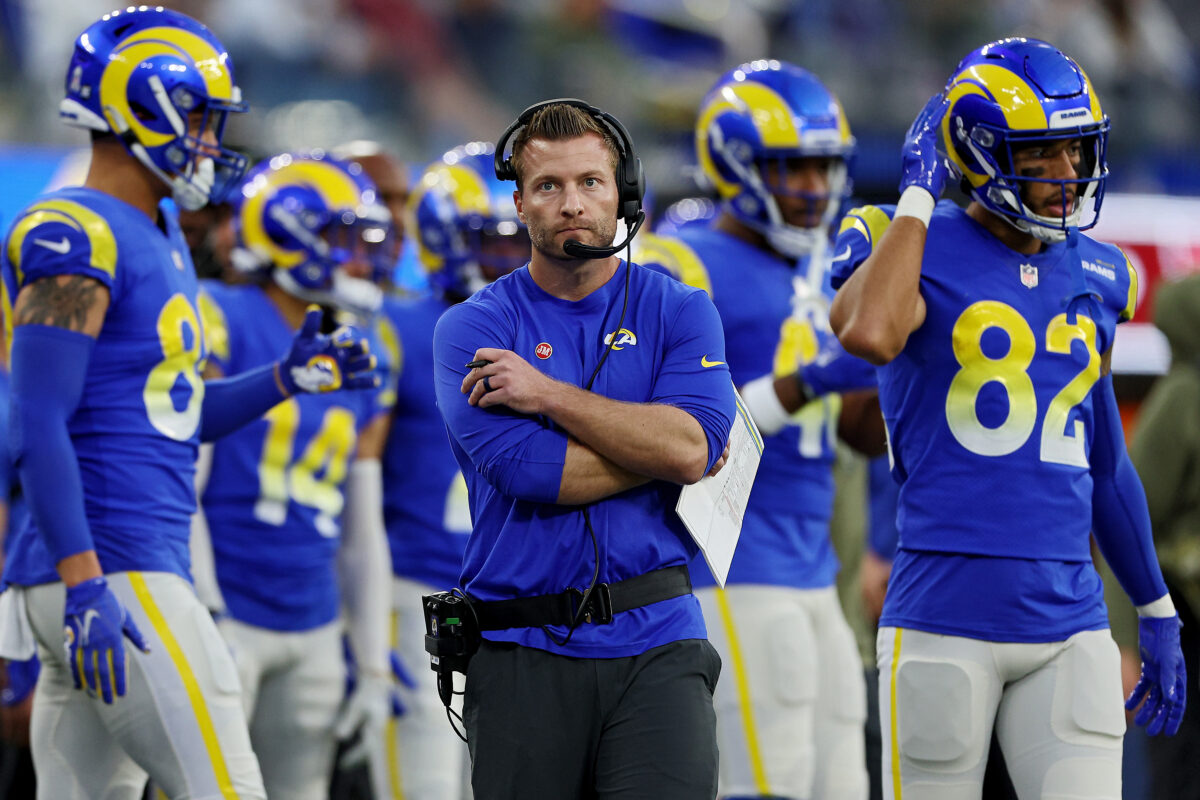For the most part, the Los Angeles Rams have been quite good in the red zone this season. They rank 10th in the NFL in red zone touchdown percentage, finding the end zone 60.5% of the time.
However, in Sunday’s win over the Washington Commanders, they went just 1-for-3 in the red zone, including a 1-for-3 mark in goal-to-go situations. It was the second time in as many weeks that Sean McVay curiously abandoned the run when it was moving the ball well, calling three straight pass plays before settling for a field goal.
He was asked about the Rams’ recent red zone struggles – as minor as they might be – on Monday and he took full responsibility. He admitted his play calling near the goal line angered him, and he vowed to be better in Thursday’s game against the Saints.
“Yeah, the main thing that I was really pissed off about myself was the first down and five call on the first drive of the game,” McVay said. “There are always going to be some things that you can get into, but we had run it really well on the previous play. We had run it really well on that drive. When you take a negative right there, didn’t need to do that. I thought that was a really poor play call that set us behind the sticks. There are a lot of instances of things that you can always do better, but I thought that first sequence, in particular, that we ended up having to settle for a field goal, the way that our guys were playing, the way we were able to run it, the way Matthew (Stafford) was seeing the field, thought it was a much better opportunity to … I could have put them in a better spot that I think would’ve led to seven instead of three.”
McVay admitted last week that against the Ravens, the defense made a concerted effort to stop the run in the red zone after the Rams handed it off nine straight times on their opening drive. That led to three passes in a row by Stafford, resulting in a field goal.
He isn’t going to call a running play for the sake of calling it, especially if the defense is loading the box to stop the run. That may have been the case against the Commanders on Sunday, but there was little reason to go away from Kyren Williams when he was running it so well.
“Each play, each section is kind of its own entity. But there is no doubt about it that yesterday, that one in particular could have been better,” McVay added. “I think there were some different reasons for some of the Baltimore things that I don’t want to get too much into, but ultimately it’s my job and our job as coaches to try to do as good a job as we can putting our guys in the right situations to thrive and succeed. I’m never going to shy away from the times that I can be better. Certainly, those instances that you’re talking about, I take full ownership and accountability for and that is where you go back to work and you try to make sure not to repeat those mistakes.”
Multiple times this season, McVay has mentioned the positive effect running the ball and getting the offensive linemen going downhill has on the offense, which is why he was so angray at himself for going away from that in the red zone Sunday.
“You’re being a little hypocritical and you kind of got away from some of your foundational beliefs, especially with the way that our guys were playing and try to pride yourself in having a good feel for the flow of the game,” he said of himself. “In that drive, in particular in that first down and five call, I thought that was something that hurt us and look to improve and that is something I’ll try to do for Thursday.”









